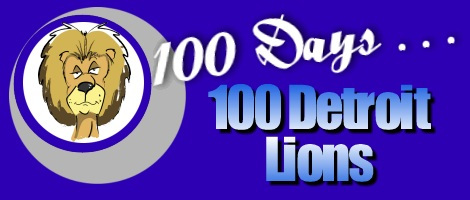28. Cloyce Box
Offensive End / Halfback. 1949-50, 1952-54 Detroit
Cloyce Box was drafted as a halfback by the Washington Redskins out of West Texas A&M in the 15th round in 1948. However, his rights were sold to the Lions before he would even play one down for the Redskins. Newly hired Lion coach Bo McMillin moved the 6-foot-4, 220 pound Box to offensive end, where he would become a star. You might be asking yourself . . . how much did it cost to get one of the greatest pass catchers in Lions’ history? The answer is, for the astronomical sum of $250. Beginning in 1950, Box would become the prime target of fellow Texan Bobby Layne. Their duo would spearhead a Lion air-attack that would garner back-to-back World Championships, as well as set team passing records that remain standing over 50 years later.
Until 2011, when Calvin Johnson surpassed him with 16, Box held the single-season Lion record for touchdown receptions (15). He still holds the team’s career yardage-per-reception average with 20.7 yards-per-catch. His greatest day came against the Baltimore Colts on December 3, 1950, when he caught 12 passes, for 302 yards and 4 touchdowns. The yardage and touchdown marks remain Lion records, and the 12-catch total stood until Herman Moore surpassed him with 14 grabs against the Chicago Bears on December 4, 1995. Box’s abbreviated five-year career only allowed him to catch 129 passes; however 32 of those went for scores. Those numbers equate to Cloyce ending up in the end zone roughly every three times he caught the ball, which is extraordinary production no matter what era you’re talking about.
It is quite likely that Box’s career would have wound up with an enshrinement in Canton if it hadn’t been delayed four years, and later interrupted for another, due to two stints in the United States Marine Corps. Cloyce, who was 25-years old when he joined the Lions, fought in some of the fiercest battles of World War II. He was later called back to active duty in 1951 to serve another year during the Korean War. Box earned all-pro and Pro Bowl honors after the 1950 season, and was selected to another Pro Bowl after the ‘52 campaign when he finished second in the league scoring race with 90 points.

